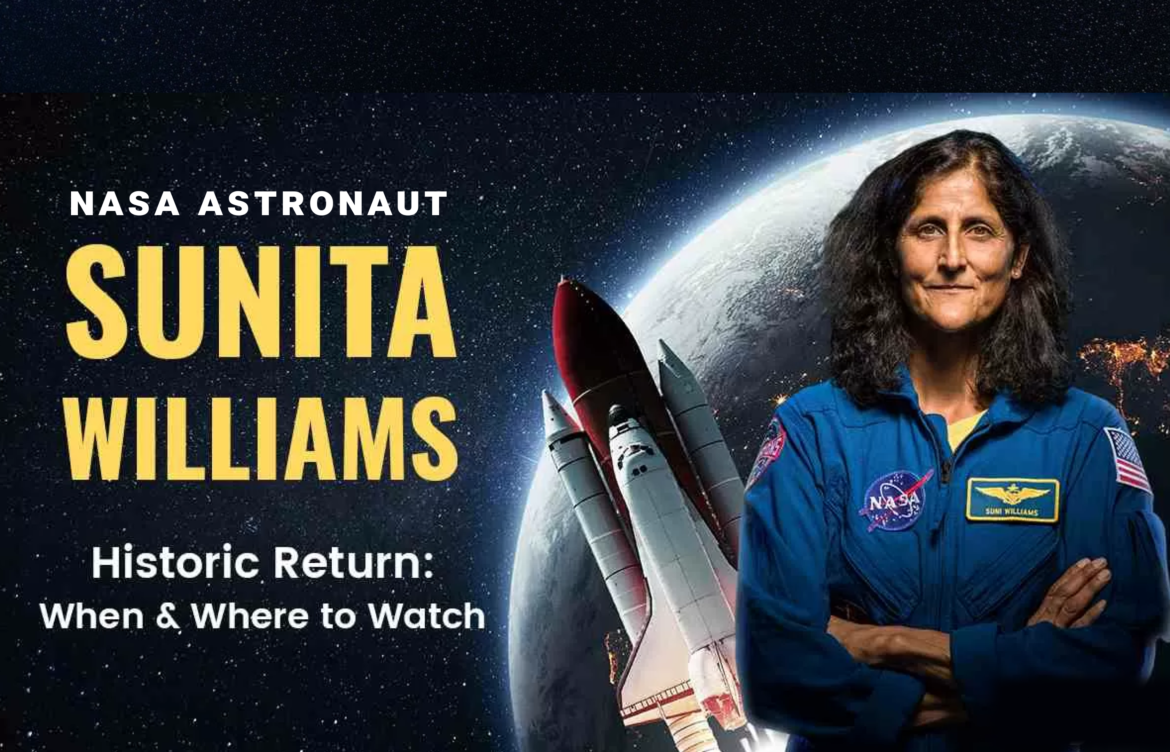
NASA Astronaut Sunita Williams Shocking Setback & Heroic Return!
NASA Astronaut Sunita Williams:
- NASA Astronaut Sunita Williams, and two NASA astronauts, have successfully returned to Earth following an unplanned nine-month stay on the ISS. Technical problems with their return spaceship caused their mission, which was originally scheduled to last just a short time, to be prolonged. The difficulties they encountered throughout their protracted trip, the events that led to their prolonged stay, and the ramifications for future space travel are all covered in detail in this article.
Table of Contents
The Unexpected Extension of the Mission
- NASA Astronaut Sunita Williams and Barry Wilmore boarded Boeing’s Starliner spaceship in June 2024 to travel to the International Space Station. To assess the Starliner’s ability to carry personnel to and from the space station, the mission was designed to be a brief test trip. But soon after docking with the ISS, the Starliner was found to have mechanical problems, including helium leaks and problems with its propulsion system. NASA had to make the crucial choice to keep the astronauts on board the ISS until a safe way to return could be established because of these problems, which made the ship dangerous for their return trip.
Life on the ISS

Williams and Wilmore became members of the ISS crew during their extended stay, taking part in a varietof scientific studies and maintenance duties that are vital to the station’s functioning. Microgravity research, spacewalks for equipment repairs, and technological displays were all part of their everyday routines.
Both astronauts maintained a positive attitude despite the unanticipated extension, adjusting to the extended mission with professionalism and resiliency.
Effects of Extended Spaceflight on Health
- For astronauts, prolonged microgravity exposure presents several health risks. Because the musculoskeletal system experiences less mechanical stress due to the absence of gravity pull, muscle atrophy, and bone density loss are frequent problems. The danger of fractures increases when astronauts return to Earth’s gravity because they might lose up to 30% of their muscle mass and 1% to 2% of their bone density each month. Additionally, NASA Astronaut Sunita Williams’s disorder called Spaceflight Associated Neuro-ocular Syndrome (SANS) can result from fluid redistribution in the body, which can cause visual problems and face puffiness. Another issue is cardiovascular deconditioning, where the heart muscle may deteriorate as a result of the decreased effort in microgravity.
The Trip Back
- NASA Astronaut Sunita Williams partnered with SpaceX to deploy the Crew Dragon spacecraft to enable Williams and Wilmore to return safely. Launched in March 2025, the Crew-10 mission sent a new crew to the ISS and gave Williams and Wilmore the tools to get back home. On March 18, 2025, the Crew Dragon spacecraft, called Freedom, carrying Russian cosmonaut Aleksandr Gorbunov, NASA astronaut Nick Hague, Wilmore, and Williams, undocked from the International Space Station. The capsule’s lengthy mission came to a conclusion when it successfully splashed down off the coast of Florida after a 17-hour voyage.
Rehabilitation After Flight
- After returning, astronauts go through a rigorous rehabilitation procedure to get used to the gravity of Earth again. This involves aerobic activities to recondition the heart, physical treatment to restore bone density and muscular strength, and monitoring for any neurological problems brought on by extended exposure to microgravity. Following a prolonged stay in the remote and cramped environment of the ISS, astronauts are also given psychological care to aid in their reintegration into everyday life.
Implications for Upcoming Expeditions
- As space organizations prepare for trips to Mars and beyond, the experiences of Williams and NASA Astronaut Sunita Williams offer important insights into the difficulties of long-duration spaceflight. Developing efficient countermeasures to guarantee astronaut safety and mission success requires an understanding of the health effects of prolonged stays in microgravity. Furthermore, the technological problems with the Starliner spacecraft emphasize how crucial it is to thoroughly test and validate new spaceflight technologies before implementing them in crewed missions.
Political and Public Responses
- The protracted journey attracted a lot of public interest and provoked political debates about the dependability and safety of commercial spacecraft. The delays were attacked by former President Donald Trump and his advisor Elon Musk, who blamed them on administrative choices. NASA Astronaut Sunita Williams stressed, however, that the safety of the astronauts came first and that the decision to postpone their return was made only based on technical evaluations and the preparedness of substitute return vehicles.
The Thoughts of Astronauts
- Both NASA Astronauts Sunita Williams were optimistic about their prolonged mission despite the difficulties. They saw the exceptional chance to support continuing scientific investigations and ISS upkeep. Their flexibility and devotion demonstrate the astronauts’ fortitude and perseverance in the face of unanticipated difficulties.
In conclusion
The difficulties and complications of human space travel are highlighted by the safe return of NASA Astronaut Sunita Williams and Barry Wilmore following a lengthy nine-month mission. Their story emphasizes how crucial readiness, flexibility, and teamwork are to overcome unanticipated challenges. The lessons acquired from this trip will guide plans to guarantee the safety and well-being of astronauts on the next long-duration missions as space agencies and commercial partners continue to push the limits of space flight.
